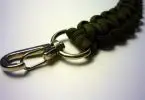Hiking is a vigorous physical activity involving long walks and steep climbs. A well-balanced hike isn’t just about strength and stamina – it also centers around hydrating correctly as you rack up the miles. Otherwise, the lack of sufficient hydration can lead to functional and metabolic impairment during hikes.
This could range from regular fatigue to vertigo, kidney failure, and other serious issues.
In this article, we explain the importance of hiking hydration with useful facts and tips which will help you stay primed to conquer your chosen hiking trails.
Minimum Water To Survive Every Day?
As just a matter of survival, you need to drink a minimum of 1 liter of water every day.
This much water intake makes up for the loss of water your body endures naturally on a daily basis. You probably don’t realize this as you go on with your day but there are three major ways in which your body excretes water, involuntarily. Let’s break these down:
Did you know your body loses water just by breathing? That’s right! This is what you call ‘Respiratory loss.’ As the respiratory tracts in your lungs are lined with water molecules, you lose up to 250-350 mL per day by simply exhaling. This loss of water is directly correlated to how quickly or slowly you breathe. This probably explains why you feel dehydrated when you’re jogging or hiking because you’re breathing at a faster pace.
Respiratory loss is also influenced by weather changes in your environment. In dry conditions, you lose more water when you breathe and when it’s humid, your body doesn’t excrete that much water. Naturally, hiking in dry, summer weather requires more hydration than otherwise.
Then you have ‘Urinary loss’, which amounts to an excretion of up to 500-1,000 mL of water per day. Your body also loses water via feces which is at least 100-200 mL per day.
And finally, your body endures ‘Insensible loss’ that stems from sweating wherein you lose up to 450-1,900 mL on a normal day. It’s important to point out that if you sweat excessively on hikes, you will need extra hydration to maintain a healthy water balance for more energy.
Dangers Of Dehydration
Water constitutes about 60% of your body’s total weight. When you use or excrete more water than you consume, you may see some signs of dehydration. These signs vary in terms of intensity and if they show up while you’re hiking, be sure to hydrate accordingly.
One of the most common dangers of dehydration is muscle cramps. Muscle cramps are characterized by involuntary muscle contractions or spasms that can cause a significant amount of discomfort while you’re hiking. If you’re a hiker and you’re experiencing muscle cramps, this is your cue to drink some water.
The lack of proper hydration can make your joints weaker. Especially when hiking, your joints are constantly rubbing off on each other, and water acts as a natural lubricant that keeps your joints intact. If dehydration isn’t addressed immediately, the cartilage surrounding your joints can wear off completely. This is not something an avid hiker wants.
Dehydration is the culprit for various other life-threatening dangers such as:
- Constipation
- Depression
- Kidney Stones
- GallStones
- Uremia
- Hypertension
In extreme cases, dehydration can also be fatal and can lead to multiple organ failures and eventually, death.
Can You Drink Too Much Water While Hiking?
Yes, overhydrating can happen while hiking and while it poses rare complications, it can lead to a disorder called Hyponatremia or water intoxication in some cases.
Typically, drinking too much water while hiking dilutes the sodium and electrolyte levels in your blood.
When the normal sodium levels in your blood are disturbed by too much water, you could have episodes of diarrhea, nausea, headaches, incessant vomiting, and uncontrollable sweating. Thanks to excessive hydration, your body ends up excreting more water than it normally would if you hydrated sufficiently – which is usually an unpleasant experience.
While overhydration doesn’t cause any serious problems with hikers who are diligently sweating it out, it’s always best to keep an eye out for signs of overhydration and drink water only if and when your body asks for it.
Recommended Reading: We’ve written a whole article on how to prevent overhydration that you might be interested in.
How Much Water To Drink While Hiking?
Drinking the right amount of water while hiking depends entirely on the length of your hike, the number of hours spent hiking per day, the difficulty level of the hike, and the weather conditions in which you’re hiking.
To stay on the safe side, it’s best to carry at least 3 to 4 liters of water in your backpack. If you’re hiking along trails that have streams or rivers, you could always fill up your water reserve and move along. If you’re hiking along routes that don’t have natural water sources, you might want to plan your hike accordingly to avoid the risk of being dehydrated.
Hiking in warmer weather conditions means that you’re going to sweat a lot. On such hikes, it’s ideal to drink at least 1 to 1.5 liters of water every hour. This amounts to about 4 to 6 cups.
While cold temperatures make you feel like you haven’t sweat at all, your body is still losing water. During such hikes, continue to hydrate yourself with 1 liter of water per hour.
In humid weather, the air around you is laden with water vapor that can make you sweat a lot more than you realize. To avoid the dangers of dehydration, stay hydrated and drink more water as you go along.
Drinking water while hiking is rooted in understanding what your body is telling you. Signs like thirst, parched lips, skin dryness, loss of concentration, and a dip in energy indicate that you may be a bit dehydrated and that you should drink some water to get back on track.
In general, by the time you feel thirsty, you’re already dehydrated.
How To Filter Water When Hiking?
Gone are those days when you could drink water from a flowing stream without any hesitation. With humans, cattle, and animals taking up space around water bodies, it’s hard to tell whether these natural water sources are clean and sanitary. So, if you’re hiking and you have no choice but to drink from a stream or want to minimize the amount you’re carrying, then it’s a good idea to filter the water to ensure that it is safe for consumption.
Here’s how to filter water when hiking.
Filter Straw
Slick and compact, hiking filter straws are perfect for adventures wherein you’d rather consume water from natural sources than lug around water weight in your backpack.
Filter straws are equipped with carbon films that filter out harmful bacteria and pathogens from unknown waters. This essential hiking tool also comes with a hollow fiber membrane to ward off any additional residue that may have been left behind.
Probably the best-known example of filter straws are the LifeStraw Personal Water Filters.
Recommended Reading: We’ve written a whole article on our top picks for water filters that you might be interested in.
Gravity Water Filter
Made for filtering water from large water bodies, this type of filter allows gravity to do all the work. Whenever you’re taking a break while hiking or when you’re at camp, fill up the reservoir with unfiltered water and hang it up on a tree branch.
Wait for gravity to push the filtered water into a clean bag, leaving all the impurities and germs in the water behind. Once the filtration process is complete, you might want to clean the reservoir for later use.
The LifeStraw Mission Water Purification System is one of the most trusted gravity water filters currently available on the market.
Recommended Reading: We’ve created a list of our favorite gravity water filters that you might be interested in.

How To Carry Water While Hiking?
There are a few ways in which you can carry water while hiking, although few are as reliable as hard, durable water bottles.
Hard water bottles that are usually fashioned out of either stainless steel or hard plastics are a good way to carry water. While hard plastics are the regular choice, stainless steel proves to be better in the long run because they store water without diminishing its quality. Whether you’re hiking in cold or warm temperatures, water remains fresh and intact when it’s stored in stainless steel bottles as opposed to plastic bottles.
Most hikers who like to travel with lightweight backpacks prefer using collapsible water bottles to carry water. When these bottles collapse, they pretty much fit into any backpack. If you’re relying on natural water sources for water, this is a good addition to your hiking gear. Having said that, collapsible water bottles aren’t reusable for long and you may need to replace them with new ones after a few hikes.
Recommended Reading: We’ve created a list of our top picks of collapsible water bottles that you might be interested in.
Finally, you have water bladders that are perfect for hiking long distances. Conveniently sized and designed to last, water bladders for hydration reservoirs come with a tube that runs outside the backpack. This feature allows you to drink water while you’re on the move. You might want to refrain from using the tube in winter because they tend to freeze in sub-zero temperatures. Filling the bladders might be a hassle for some who like to take fewer breaks while hiking.
Conclusion
Hiking is an amazing activity that several of us can get lost in – while losing ourselves in its physical challenges and beautiful sights, it can get easy to forget that our bodies need water to keep on going.
With this simple primer, we hope that you’ve understood the importance of staying hydrated, how your body responds to water loss, and some great ways to keep yourself well-hydrated during even the most challenging of hikes.








